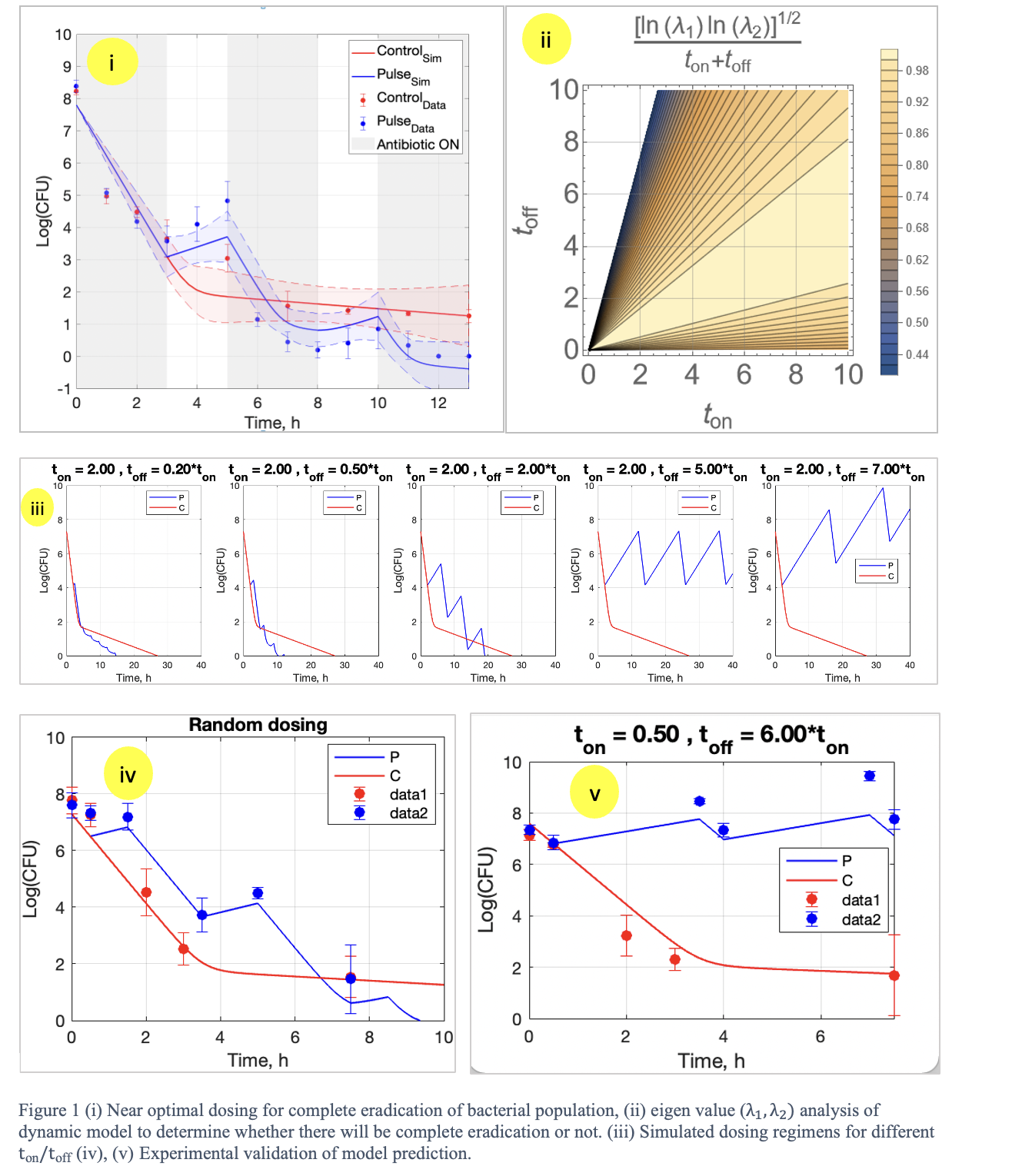(586a) Trick and Treat: Pulse Dosing to Eradicate Persister Bacteria
AIChE Annual Meeting
2022
2022 Annual Meeting
Computing and Systems Technology Division
Applied Math for Biological Systems: Plants and Microbes
Thursday, November 17, 2022 - 8:00am to 8:19am
Hypothesis/ Goals: Detailed computer simulations with calibrated models led us to the hypothesis that persisters can be eradicated by an alternating antibiotic dosing regimen, as follows: Expose bacteria to a repeated cycle of (a) high enough antibiotic concentration that quickly kills susceptible cells before they become dormant, and (b) a low (ideally zero) antibiotic concentration at an appropriate time within the cycle, enticing persisters to recommence growth and be susceptible to the antibiotic. We show that the critical parameter determining the success of pulse dosing is the ratio toff/ton where toff (ton) duration of zero (non-zero) antibiotic concentration.
Methods:
Experimental: For in vitro experiments, an E. Coli. (transformed with GFP) culture was treated with Ampicillin. All cultures were incubated at 37°C in LB liquid media. A typical cycle (Figure i) was (a) Expose bacteria to Ampicillin (100 µg/ml) for ton hours, (b) wash treated cells and grow in fresh media for toff hours. Bacteria population size was assessed by colony counting on LB-agar plates. A control population exposed at constant Ampicillin concentration was also used in all experiments.
Computational: MATLAB and Mathematica were used for simulations, modelling, parameter estimation, and optimization. Eigenvalue analysis of the dynamic model was used to assess the optimal rate of bacterial population decline as a function of ton, toff (Figure ii).
Results: The hypothesis was confirmed in vitro and was repeatable. Appropriately designed pulse dosing regimens outperformed conventional constant dosing regimens. Analysis using the fitted model resulted in the following predictions:
- The ratio toff/ton is indicative of anticipated outcomes, i.e. bacterial population eradication or not (Figure ii);
- A ratio of toff/ton < 5 is required for eventual eradication of the entire population whereas toff/ton > 5 fails (Figure ii and iii).;
- At toff/ton ~ 0.5 the eradication is fastest (Figure ii and iii); and
These predictions were confirmed in vitro as shown in Figure (i, iv and v). Experiments also showed that pulse dosing is robust, in that random perturbations of the dosing period produce near-optimal results (Figure iv).
Implications:
Pulse dosing has a high potential for treating persistent infections with existing antibiotics, which otherwise would be ineffective. This would reduce drug load on patients and prevent development of antimicrobial resistance. This study successfully developed and tested a design procedure of such pulse dosing. Future work will concentrate on additional bacteria/antibiotic pairs, including combinations of antibiotics to treat stubborn infections.
